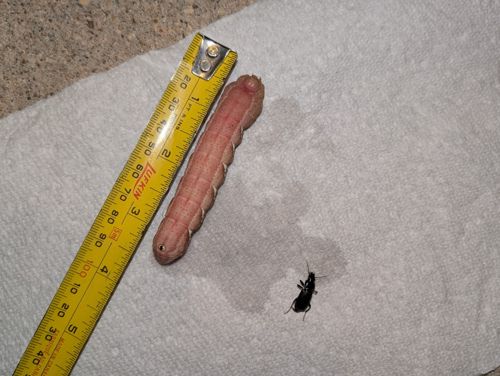Tomato Hornworm (Caterpillar)
Scientific Name: Manduca quinquemaculata or Manduca sexta (difficult to distinguish based solely on this image, but both are common and similar in appearance as larvae)
Order & Family: Lepidoptera, Sphingidae
Size: Larvae can grow quite large, up to 10-12 cm (4-5 inches) in length, as seen in the image with the measuring tape. Adult moths have a wingspan of 9-13 cm (3.5-5 inches).

Natural Habitat
Gardens, agricultural fields, and areas where host plants from the nightshade family are cultivated.
Diet & Feeding
Larvae are herbivorous, feeding voraciously on the foliage of plants in the nightshade family (Solanaceae), including tomatoes, potatoes, tobacco, pepper, and eggplant. Adults feed on nectar from flowers.
Behavior Patterns
Larvae (caterpillars) are primarily nocturnal feeders. When disturbed, they may rear up their front portion, resembling a sphinx, which is why the adult moths are called sphinx moths. They pupate in the soil. Adults are strong fliers and are often seen hovering over flowers, similar to hummingbirds.
Risks & Benefits
Risk: Tomato hornworms are considered significant pests to home gardeners and commercial farmers due to their ability to defoliate host plants rapidly, leading to crop damage and reduced yields. Benefits: As adults, sphinx moths are important pollinators of a variety of flowering plants.
Identified on: 8/22/2025